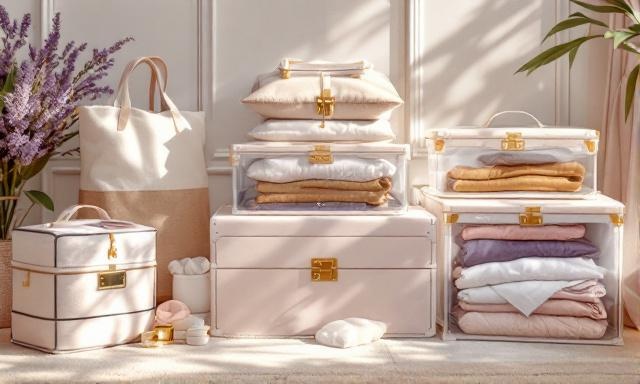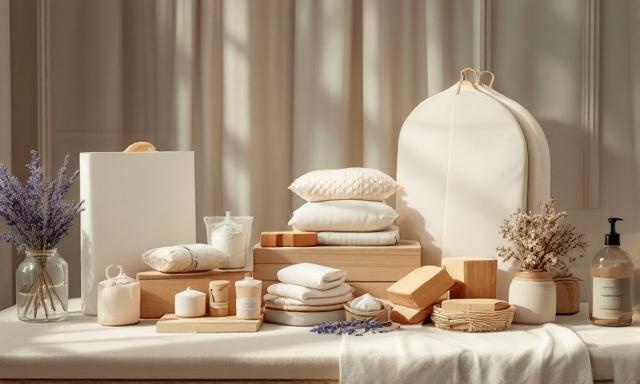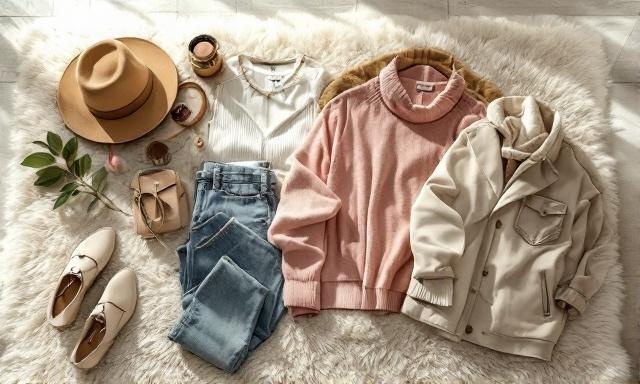
Seasonal Wardrobes: Rotating Closets with Purpose
Organizing Clothes to Match Life's Rhythms
The Joy of Seasonal Organization

I've discovered that rotating my wardrobe seasonally has completely transformed
my closet space. When I store away my chunky sweaters and winter coats during
summer months, I free up nearly half of my closet space, making it much easier
to see and access my current wardrobe. This simple practice allows me to
maintain a clean, organized space where every item has room to breathe,
preventing wrinkles and keeping my clothes in better condition.
Every morning used to feel overwhelming when I faced a closet stuffed with
clothes for all seasons. Now that I only keep current-season items visible, I
spend far less time deciding what to wear. Instead of sifting through heavy wool
pants in July or lightweight sundresses in December, I can quickly put together
appropriate outfits because everything in my closet is suitable for the current
weather.
The psychological benefits of maintaining a seasonally organized closet have
surprised me. Walking into a well-arranged space filled with only
weather-appropriate options starts my day on a positive note. I feel more in
control and less stressed about my wardrobe choices, and this sense of
organization often spreads to other areas of my life. My morning routine has
become more efficient, and I find myself taking better care of my clothes since
each piece has its proper place and purpose.
Essential Storage Solutions

Through years of experience storing seasonal clothes, I've found that clear
plastic bins with secure lids work best for most items. These containers protect
clothes from dust and moisture while allowing me to easily see what's inside,
and their sturdy construction prevents any damage from stacking. I prefer bins
with handles for easy movement and recommend choosing sizes that fit both your
storage space and the types of items you'll be storing.
The debate between vacuum storage bags and breathable cotton containers is one
I've thoroughly tested. Vacuum bags are fantastic for bulky items like winter
coats and heavy sweaters, reducing their size by up to 75% and protecting them
from moisture. However, I've learned that natural fibers like wool and delicate
materials need breathable cotton storage bags to prevent damage and maintain
their shape over time.
My approach to organizing different closet sizes has evolved with each home I've
lived in. For walk-in closets, I use a combination of high shelving for storage
containers and lower spaces for current-season items. In standard closets, I
maximize vertical space with double hanging rods and over-door organizers, while
keeping off-season items in under-bed storage or high shelf spaces.
Living in a small apartment taught me to think creatively about storage
solutions. I utilize space under my bed with wheeled storage containers,
transform unused suitcases into seasonal storage units, and even store winter
coats in vacuum bags that fit inside decorative ottoman storage benches. These
solutions keep my seasonal items protected while maintaining my apartment's
aesthetic and maximizing every square inch of available space.
The Perfect Rotation Schedule
I've learned that the best time to switch seasonal wardrobes isn't determined by
calendar dates but by consistent temperature changes. In my experience, planning
the rotation about two weeks after temperatures have steadily shifted works
well. This prevents the hassle of pulling items back out if the weather suddenly
changes, while ensuring I'm not caught unprepared for the new season.
My transitional capsule wardrobe has become essential for handling unpredictable
weather patterns. I maintain a core collection of versatile pieces like light
cardigans, layerable tops, and mid-weight pants that work across temperatures.
These items stay in my closet year-round and help me navigate those tricky weeks
between seasons when the weather can't seem to make up its mind.
The key to maintaining organization during the rotation process lies in having a
system. I sort items into categories before storing them, take photos of special
outfit combinations I want to remember, and keep a detailed inventory of stored
pieces. This methodical approach helps me avoid the chaos that can come with
switching seasons and ensures nothing gets lost in the process.
Maintenance and Care During Storage

Before storing any seasonal items, I follow a strict cleaning routine to ensure
they're ready for next year. Every piece gets properly laundered or dry cleaned
according to its care label, and I carefully check for and repair any loose
buttons or small tears. This attention to detail saves me time and stress when
the season returns, as everything comes out ready to wear.
I prefer natural methods for keeping stored clothes fresh and protecting them
from moths. Lavender sachets, cedar blocks, and rosemary sprigs are my go-to
solutions. These natural alternatives work wonderfully to keep clothes smelling
fresh while deterring pests, without the harsh chemicals found in traditional
mothballs. I replace these natural repellents every season to maintain their
effectiveness.
Preventing damage during long-term storage requires careful attention to folding
and packaging techniques. I avoid hanging knit items which can stretch out of
shape, and instead fold them with acid-free tissue paper to prevent creasing.
Delicate items get individual garment bags, while sturdy pieces can be carefully
folded together. Proper storage location matters too, so I keep everything in
climate-controlled spaces away from direct sunlight and humidity.
When bringing clothes back into rotation, I've developed quick freshening
techniques that work wonders. A brief tumble in the dryer with a damp towel
removes any storage smell, while hanging items in a steamy bathroom helps
release wrinkles naturally. For delicate pieces, I use a handheld steamer to
refresh them quickly without the need for full laundering.
Making the Most of Each Season

Each seasonal rotation provides the perfect opportunity to evaluate my wardrobe
honestly. I assess each item based on its condition, how often I wore it last
season, and whether it still fits my lifestyle and personal style. This regular
evaluation helps me maintain a wardrobe that truly serves my needs and prevents
unnecessary accumulation of clothes I won't wear.
Creating seasonal capsule collections has revolutionized my wardrobe efficiency.
I focus on selecting versatile pieces in coordinating colors that can create
multiple outfits. My rule of thumb is that each item should work with at least
three others in my collection. This approach ensures I have plenty of outfit
options while keeping my seasonal wardrobe concise and functional.
Deciding when to let go of clothing items used to be challenging, but I've
developed clear criteria. If I haven't worn something for two seasons, if it
requires repairs I'm unlikely to make, or if it no longer fits my lifestyle or
body comfortably, it's time to say goodbye. I donate these items to local
charities or consign higher-end pieces, making room for clothes that better
serve my current needs.
